Continuing on our tour of Castle Hill, we made our way to the Mátyás-templom. The church, which in English is called Matthias Church, holds historical significance, because according to church history, it sits atop the site of the church originally founded by Hungary’s first king, Stephen I, although no remains of the original church can be found today. Originally holding names such as “The Church of Mary” and “The Church of Our Lady” it was given its current moniker in the 19th century, being named after Matthias Corvinus, King Matthias I who reigned as King of Hungary and Croatia from 1458-1490. During his reign, Matthias not only ordered the transformation of the original Southern Tower, but he also had two weddings on the site; the first wedding was to his second wife, Catherine of Poděbrady and, after her death, the second wedding was to his third wife, Beatrice of Naples. The exterior of the church was restored by Frigyes Schulek in the late 1800s in honor of Hungary’s 1000th anniversary. Schulek adhered to the original plans for the church, which dated back to the thirteenth century, restoring the church to its original intended splendor.
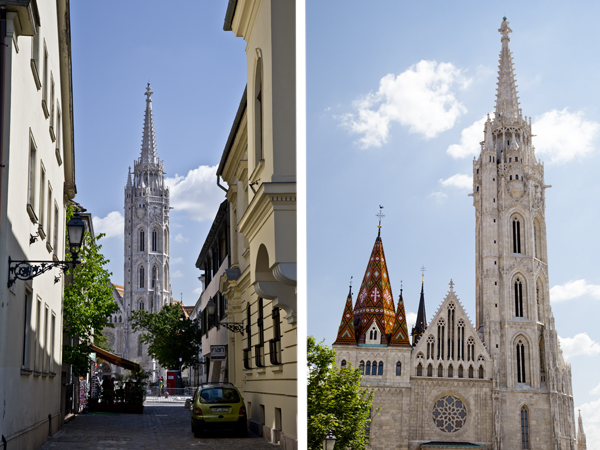
Exterior views of the Mátyás-templom the smaller colorfully tiled tower is the Béla torony the taller tower is the Mátyás torony
The Béla torony, which is the church’s smallest tower, is named for Hungary’s King Béla IV, during whose reign the church was originally constructed. The tallest tower, Mátyás torony, is named for the church’s namesake King Matthias Corvinus. The church was not only noted for royal weddings, but also for royal coronations. Two kings of the Austro-Hungarian monarchy were crowned there: Franz Joseph in 1867 (for which Franz Liszt – in Hungarian its Liszt Ferenc – composed and performed his Coronation Mass) and Charles V in 1916.
The interior of the church is absolutely spectacular with gorgeous colorful hand painted patterns and motifs covering most of the columns and walls that were modeled after designs found on stone fragments of the original church. The frescoes on the church’s interiors were painted by Bertalan Székely and Károly Lotz who were two of the most notable painters in the country at the time of the church’s restoration. The pair were also in charge of the church’s stunning stained glass windows. Your admission ticket also gets you into the Museum of Ecclesiastical Art which is housed in an upstairs gallery with lovely views of the sanctuary below. While the entire church is filled with spectacular views, the one from the King’s Oratory, which is where you will also find the Matthias Chalice and a replica of the Hungarian Royal Crown, is the best of all. When we were coming down the staircase from the Museum into the Maltese Knight Chamber, both boys were excited to find the statue of the bust of Empress Elisabeth in her Hungarian Coronation costume, whom they both recognized from our visit to the Hofburg in Vienna. We ended our Church tour with the St. Steven Chapel, which is my favorite part of the whole church. The chapel walls have seven frescoes of St. Steven and twelve stained glass windows depicting several Hungarian saints.
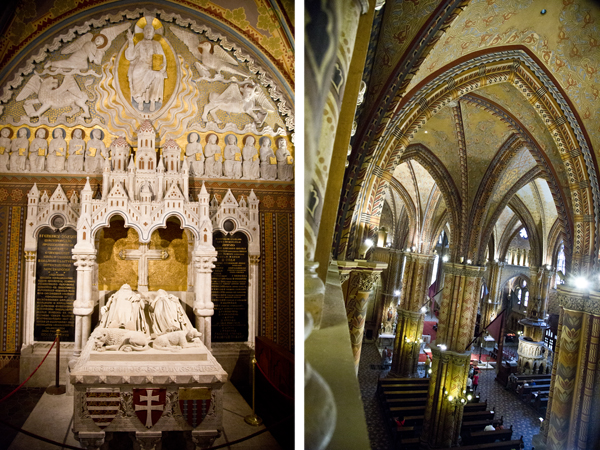
The tomb of King Béla III and Anna (Chatîllon) of Antiochia and a view of the sanctuary from an upstairs gallery
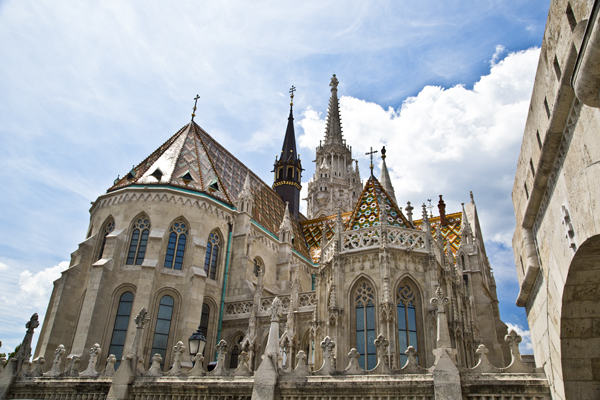
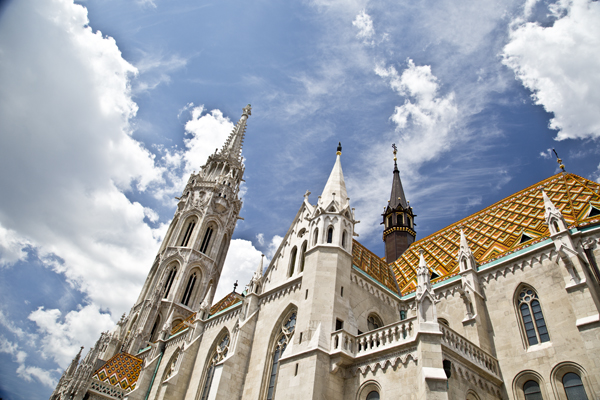



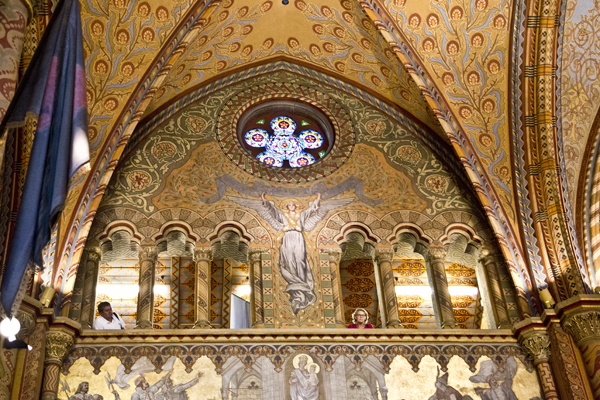
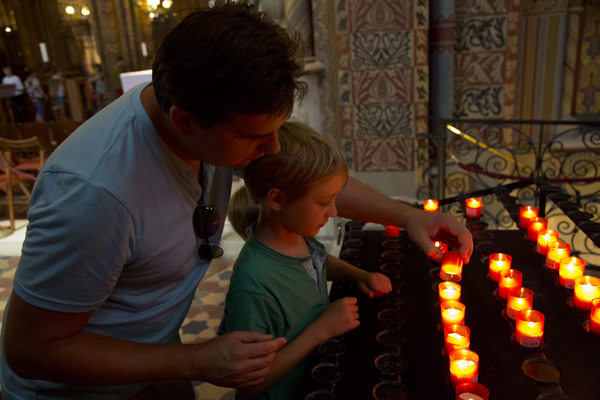
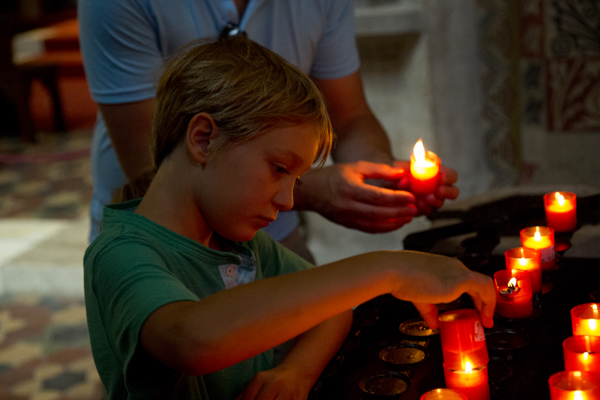


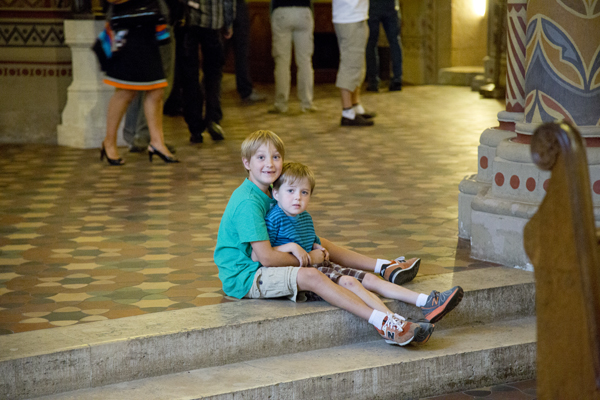
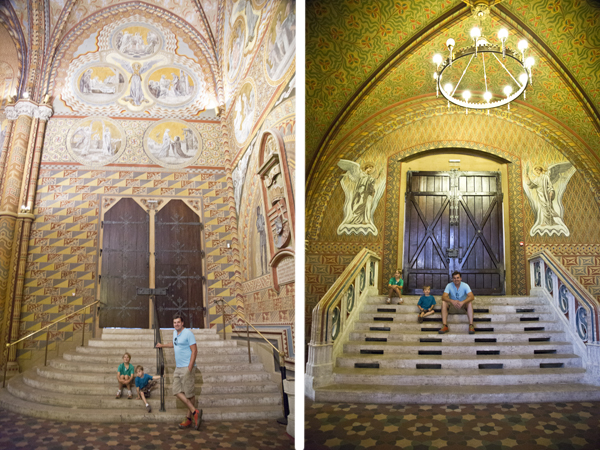
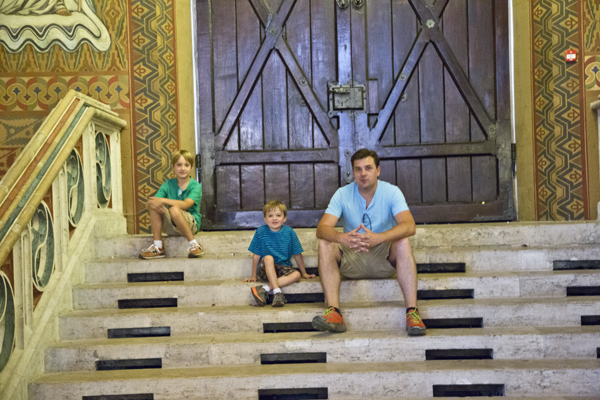
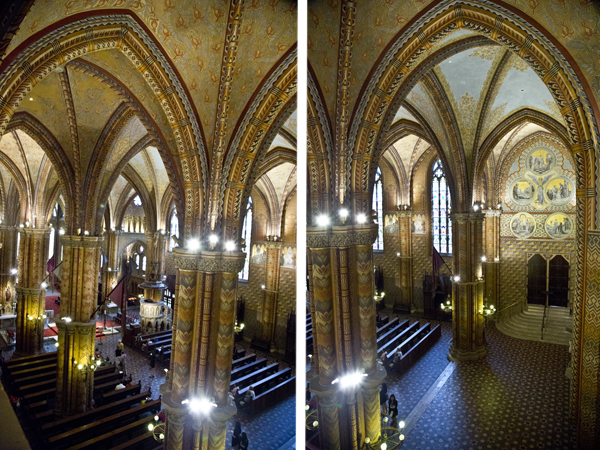
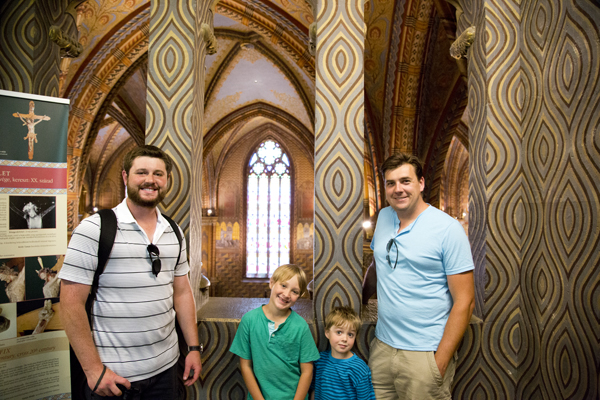
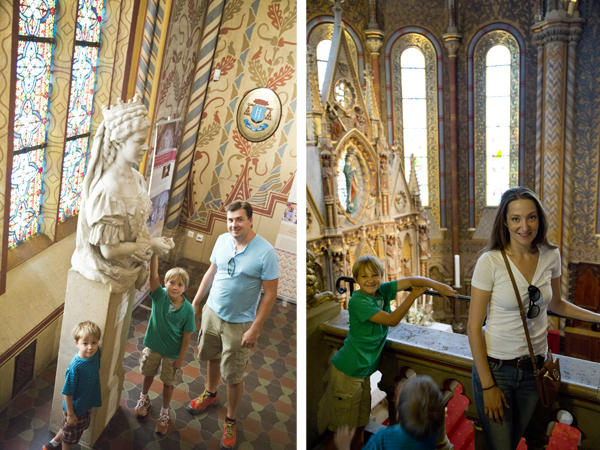


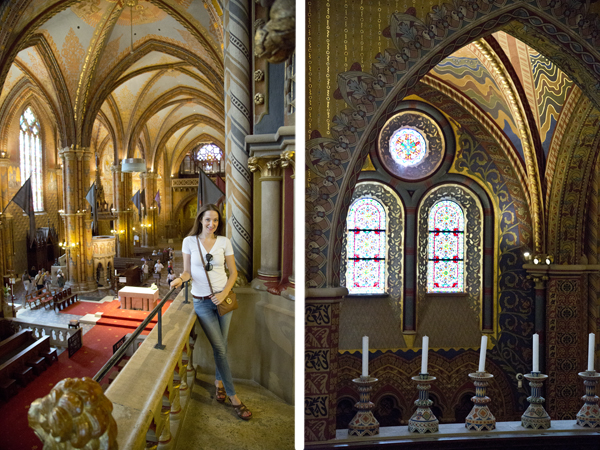
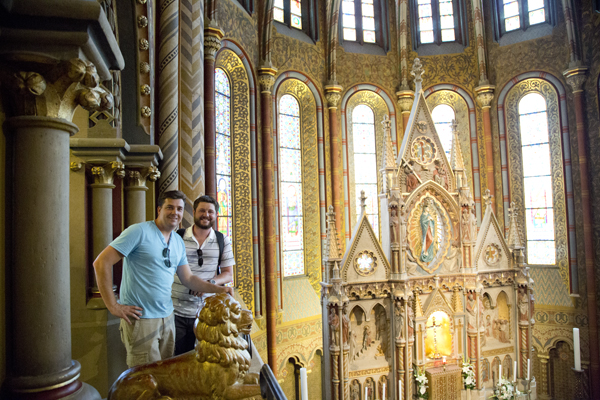

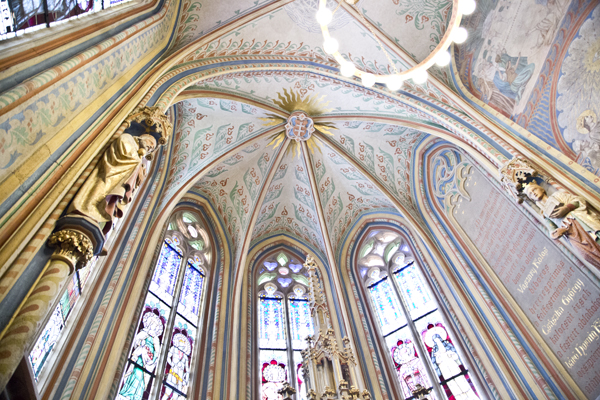
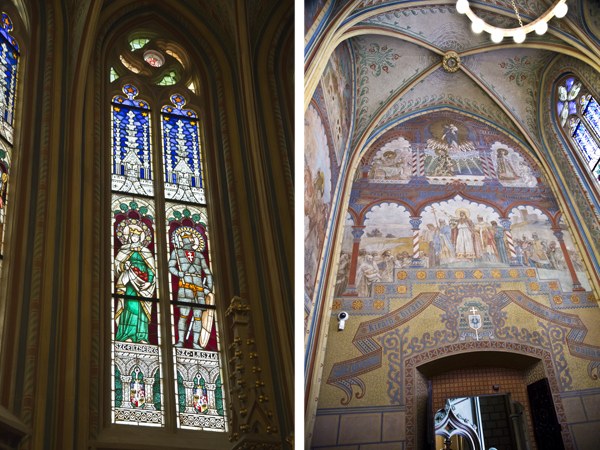
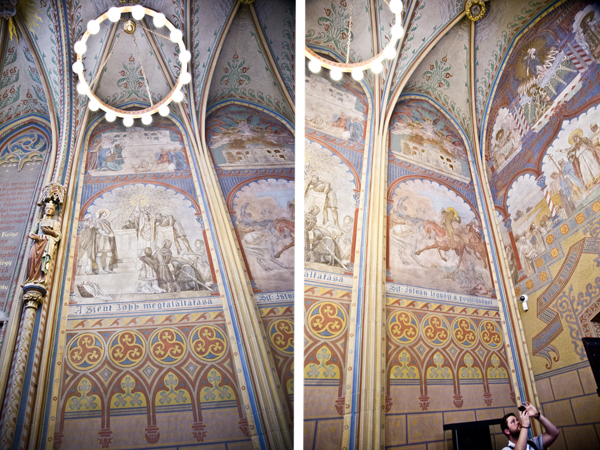
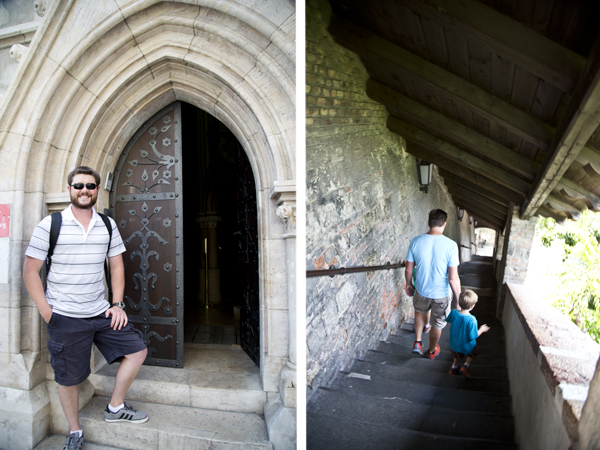
[…] view of Castle Hill behind them (you can see my posts on Castle Hill by clicking Part I or Part II). The bridge is also gorgeous at night because it is illuminated by hundreds of lights that are […]